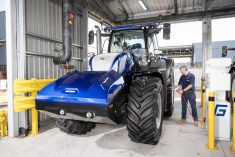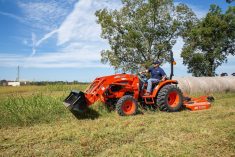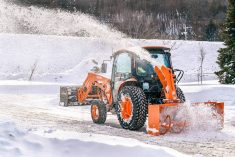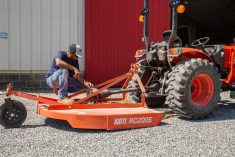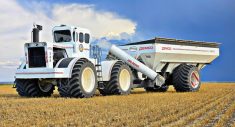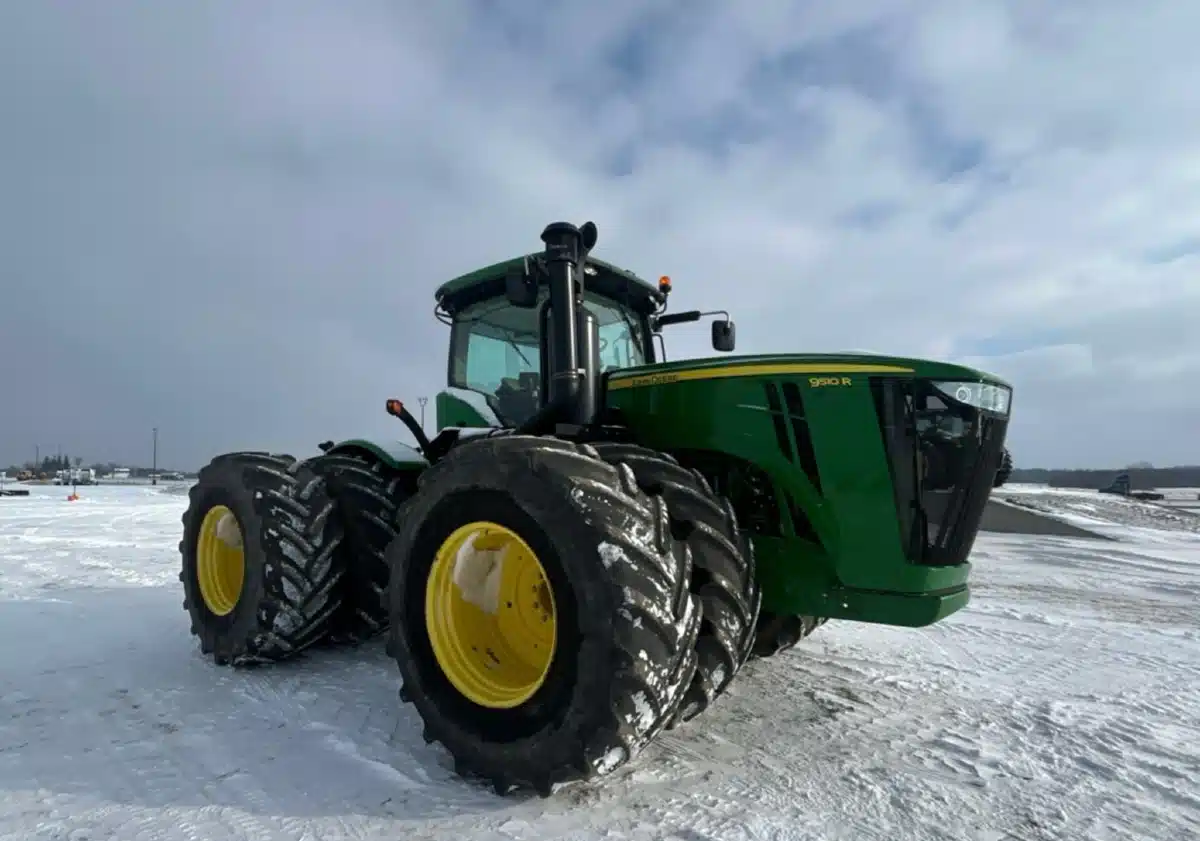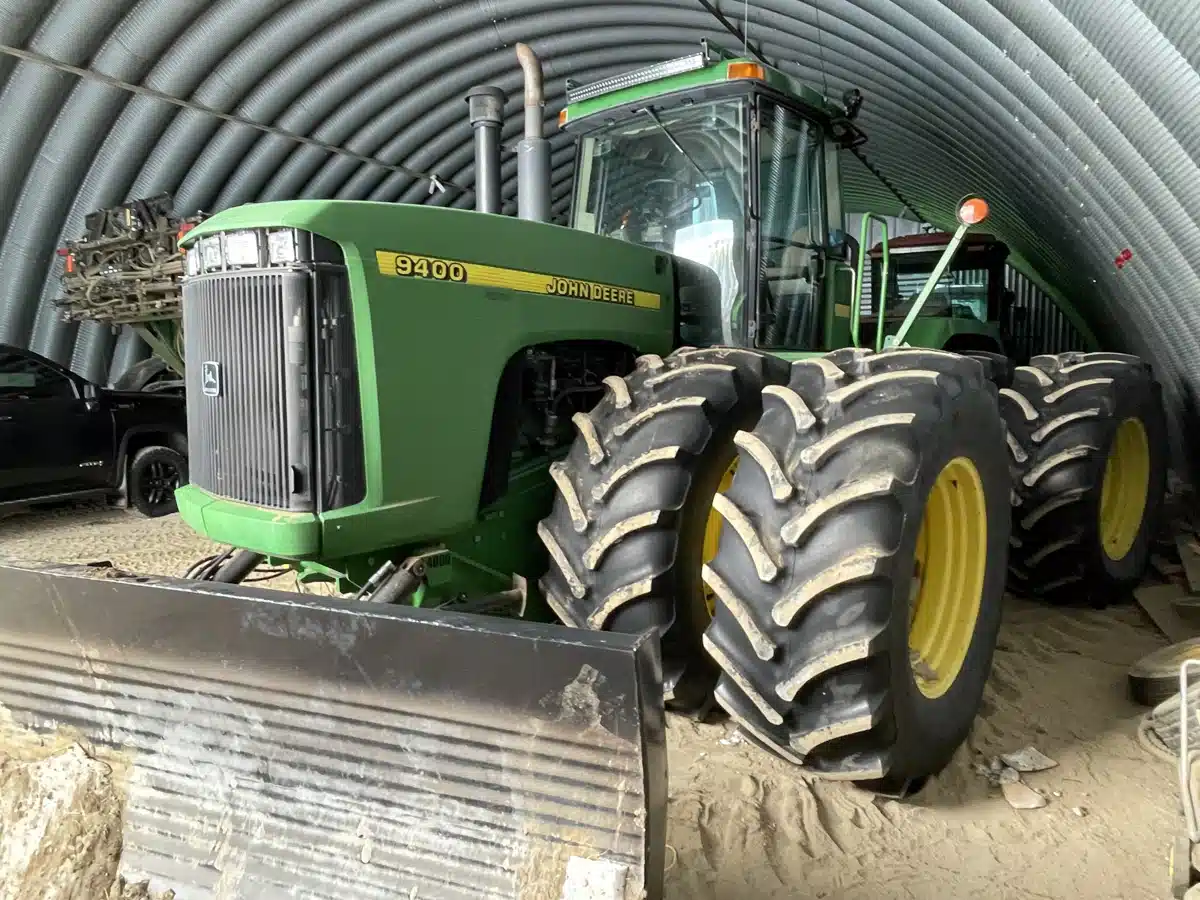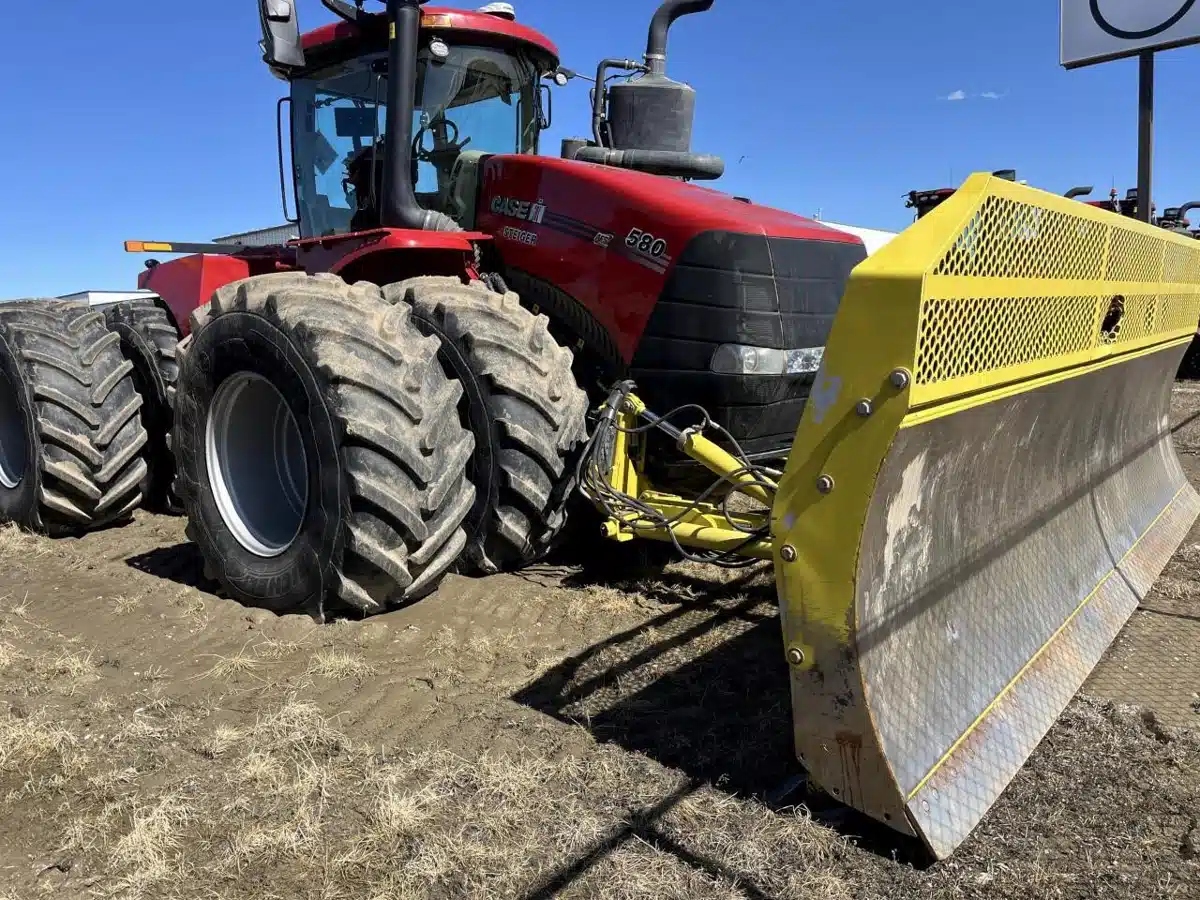While diesel isn’t going anywhere soon, companies hope to make engines more efficient without losing power
Options for powering agriculture equipment are diversifying quickly, with companies narrowing into the lanes they likely will follow into the near future.
Many electric under-100-horsepower options appeared at Agritechnica, the world’s largest agriculture machinery show in Hannover, Germany in November — but there was also the certainty that the combustion engine won’t be going away soon for high-horsepower needs.
“When you go over 100 horsepower, we see that that’s where combustion still stands pretty strong. For the 700 series Fendt, which is the same size as the tractor you see here, it will take up to 18 tonnes of batteries. So you can imagine it’s not going to be moving anywhere,” says Tommi Puomisto, marketing manager for Agco Power.
Read Also

Claas brings 1000 Series SP forage harvesters to Canada
In mid-August, Claas unveiled its new line of Jaguar forage harvesters at an event in Visalia, California, deep in the heart of that state’s dairy region.
RELATED: 2024 High-Horsepower Tractor Guide
However, there continues to be innovation in engines, as combustion engines are made more efficient — and in a glimpse into the future, hybrid electric and hydrogen or methanol fuel cells are added into the power mix to improve efficiency.
Electrification boost
Like a hybrid car, where the battery jumps in when engine load – and fuel consumption – are highest, think of a battery-powered electric motor boost that helps a combine push a slug of tough crop through, or helps a tractor start off a row as it works hard to get a cultivator in motion.
At Agritechnica, Claas was among the companies on the list for the concept innovation competition with its partial-electric drive for harvesters.
“The idea behind it is to increase efficiency of the machine, because in the grain harvest or corn harvest, you have some situations where you have a big load or you have heavy yields in the field and the rest of the time you can use the diesel engine with a little bit less kilowatt,” says Christian Schulte, global sales and marketing manager for combines for Claas.
During regular operation of the combine, the battery can be recharged, ready for the next high-demand period.
Combines work through variable crop conditions, which have variable power demands. Take the residue chopper, for example. A greener crop might require 160 horsepower just to run the chopper and spread the residue out the back. A really dry crop might require 70 horsepower. Building systems that can supplement high power needs could result in a more efficient smaller engine for average operations, saving fuel and reducing carbon.
Schulte emphasized this is currently a concept — not something you can expect to be available in a combine next year. The next step for the concept will be to test it with customers.
The most market-ready hybrid tractor at Agritechnica was a Steyr hybrid. Steyr, owned by CNH, is an Austrian company that today sells tractors only in continental Europe, not in North America. The company is pitching its new tractor on the advantages in both torque and power that an added electric drive can provide.
Marco Otten, a Steyr business manager with CNH, says the company took a 180-horsepower Steyr, boosted the engine to 260, but added a generator than yields 700 kW of electric power.
“We have now a newly designed front axle independent suspension with an electric drive on it.”
Among the benefits, Otten says, “the biggest advantage that I always say is you have high torque, low rpm, and it’s instantly available. You don’t have the lag of the traditional combustion engine.”
With what the company calls its electric continuously-variable transmission (ECVT), the diesel engine might be running, but the electric power can bypass the CVT and power the rear wheels for short-term, low-power operations such as backing up to an implement. The tractor will also turn tighter.
Otten says the new unit is ready to go into production and has been working in the field, but he doesn’t know when it will be available.
Landini also displayed a utility tractor with a hybrid engine. The diesel engine creates about 75 horsepower, with the electric engine rated at 67 horsepower. Combined, the tractor is rated at 107 horsepower in full-hybrid mode.

John Deere already has a power-boost tractor on the market. Electric variable transmission (EVT) is an option on the John Deere 8R and 8RT and 8RX models with 410 horsepower. The transmission has a motor and generator, so when the tractor is being used, it generates electric power. That power can then be sent back into implements.
To illustrate, Deere uses the example of a Joskin liquid manure spreader attached to an EVT tractor. The tractor can direct electric power not only to the Joskin spreader’s systems but also to the implement’s own driven axles. That reduces the implement’s power draw from the tractor’s engine and also provides power to the implement right at the ground for improved traction.
Providing cheaply-created electric power within the operations of the tractor could also reduce the amount of fuel needed to run PTO-driven hydraulic pumps on implements such as seeders.
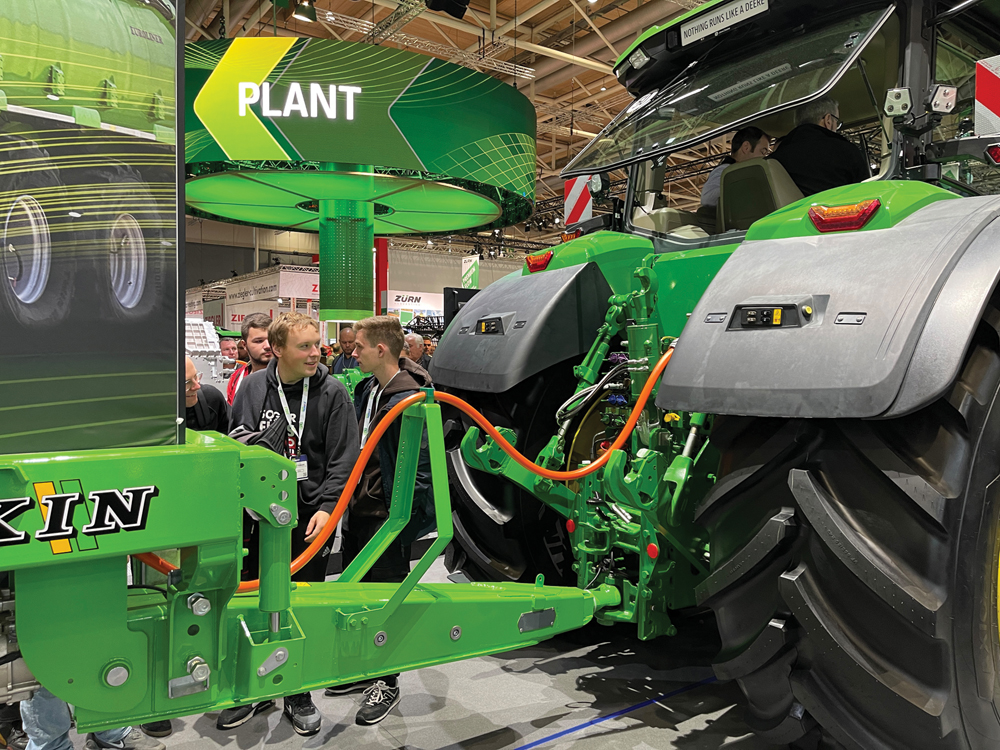
There are other options under development, says Bryan Earwood, a large-tractor product manager for John Deere, although he didn’t want to go into details. He says EVT is available in Canada and the U.S. on the 8R with 410 horsepower.
Combustion engines – new editions
Beyond adding new modules to engines and powertrains, tractor companies continue to evolve their combustion engines. In Europe, most are compatible with hydrotreated vegetable oil (HVO) fuels, along with biodiesel. In most new engines, HVO, biodiesel and regular diesel can be used interchangeably.
HVO fuels were a prominent part of most companies displays at Agritechnica, as they are a lower-carbon fuel that mostly comes from recycled cooking oils. But they’re also expensive at this point compared to regular diesel.
New Holland is unique as it has put a focus on powering tractors with methane, creating closed-loop on-farm power generation from the methane emitted by livestock manure. Its dealers will also sell a methane collection system once that tractor line is launched. Its methane tractor had a significant presence at Agritechnica, including a working model of the on-farm system that would support the tractor’s fuel.

At the Agco Power display, the company offered a look at its new fuel-efficient Power Core engine. It has created 7.5-, five- and 8.4-litre versions of the engines, which will form the basis of the Agco engine group into the future. The five-litre engine at Agritechnica is the one found in the 600 series Fendt.
Beside the conventional engine was a hydrogen concept engine, made from a retrofit of the Power Core engine. The purpose of that exhibit was to show that in the future, a farmer running a tractor with a Power Core engine may be able to retrofit that existing engine to accept hydrogen, rather than pay to replace it with a separate new hydrogen-compatible power plant.
“We’re showing the capabilities of the Core engine platform,” Agco Power’s Puomisto says — namely, the platform’s adjustability to accept alternatives such as hydrogen, methanol, ethanol or biogas.

The company’s retrofitted concept engine runs now on hydrogen with 80 per cent of the same parts as the traditional-fuel version.
Next to the hydrogen engine was an electrical boost for the hydrogen engine, meant to close the gap between the 194 horsepower produced by the hydrogen-only engine and the 221 horsepower the traditional-fuel version generates.
“We’re able to bring that same response as a diesel engine and get that peak power and torque with the 48-volt battery and an electric flywheel.”
Next to Agco’s engine display was a Fendt 700 model called the Helios, sporting a giant white hat: namely, hydrogen fuel cells, carried on top of the cab. This is the other alternative system for hydrogen, in which the fuel cells create energy, which then drives an electrical motor that runs the tractor.

Kubota also showed a similar series of engines, including hydrogen and hybrid versions.
“At the moment, as it stands, batteries we see are limited to the lower power ranges,” says Puomisto, who also emphasizes that as combustions engines go, current models on the market “are as clean as it gets.”
The traditional-fuel engines now on offer are “extremely clean compared to 10 years ago,” he says. “The CO2 and the NOx (nitrous oxide) emissions are decreased by 99 per cent.”




